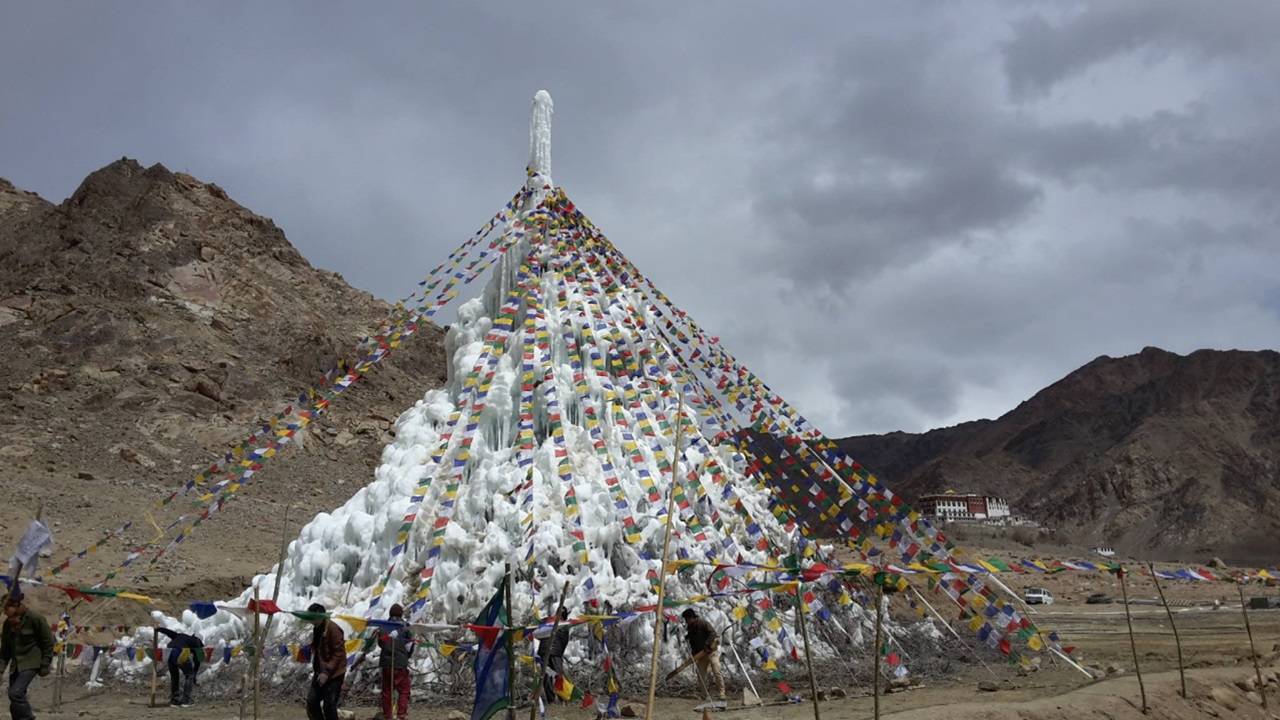
Situated amidst the majestic Himalayas, Ladakh emerges as a challenging terrain where villages grapple with severe water scarcity amid harsh climatic conditions. However, a solution is underway, poised to change traditional water management techniques and tackle the impacts of climate change head-on.
Ladakh's Water Crisis
Ladakh's villages, nestled at altitudes ranging from 2,700m to 4,000m, rely heavily on glacial streams for sustenance. Yet, acute water shortages plague these communities, particularly during critical agricultural months. As temperatures plummet and glaciers recede due to global warming, hinting ta the urgency to address water scarcity in the area.
Most villages face acute water shortage, particularly during April and May when there is little water in the streams and all the villagers compete to water their newly planted crops. By mid-June, there is an excess of water and at times flash flooding occurs due to the fast melting of the snow and glaciers. By mid-September, all farming activities end, and throughout winter water goes to the Indus river without being of use to anybody.
The Ice Stupa Project
Responding to this pressing need, the Ice Stupa project emerges as a beacon of hope. Spearheaded by His Holiness Drikung Skyabgon Chetsang Rinpochey and executed in collaboration with SECMOL, this initiative seeks to harness winter water wastage by creating artificial glaciers in the form of towering ice structures.
The Concept Unveiled
Unlike conventional artificial glaciers, which demand high altitudes and constant maintenance, the Ice Stupa concept introduces a novel approach. By vertically freezing stream water into colossal ice cones of 30-50m height resembling local sacred structures, such as Stupas, the project mitigates water wastage and ensures sustained agricultural support.
These ice mountains can be built right next to the village itself where the water is needed. Very little effort or investment would be needed except for laying one underground pipeline from a higher point on the stream to the outskirts of the village.
Operational Mechanics: How It Works
Operating without the need for pumps or power, the Ice Stupa mechanism capitalizes on the fundamental principle of water levels. Utilizing gravity, water is piped from upstream, allowing it to freeze into towering ice formations during Ladakh's frigid winter nights. As these Ice Stupas gradually melt during spring, they provide vital water resources for agricultural activities.
For instance, imagine that the pipe is mounted on a mobile phone tower at a height, and then it is made to fall from that height on Ladakh's freezing winter nights when it is -30 to -50°C. The water would freeze by the time it reaches the ground and slowly form a huge cone or Ice Stupa roughly 30 to 50m high.
Proof of Concept: The Prototype
In a test conducted at the SECMOL Alternative Institute, a prototype Ice Stupa stood as a testament to the project's viability. Enduring Ladakh's challenging conditions, the prototype delivered promising results, sustaining its structure well into May. Encouraged by this success, plans for scaling up the initiative were set in motion.
Expansion and Vision
Contented by the success of the prototype, His Holiness Drikung Kyabgon Chetsang Rinpochey endorsed the expansion of the Ice Stupa project to Phyang village. With a vision to alleviate water scarcity and foster environmental sustainability, the project embodies a paradigm shift in Ladakh's water management practices.
















